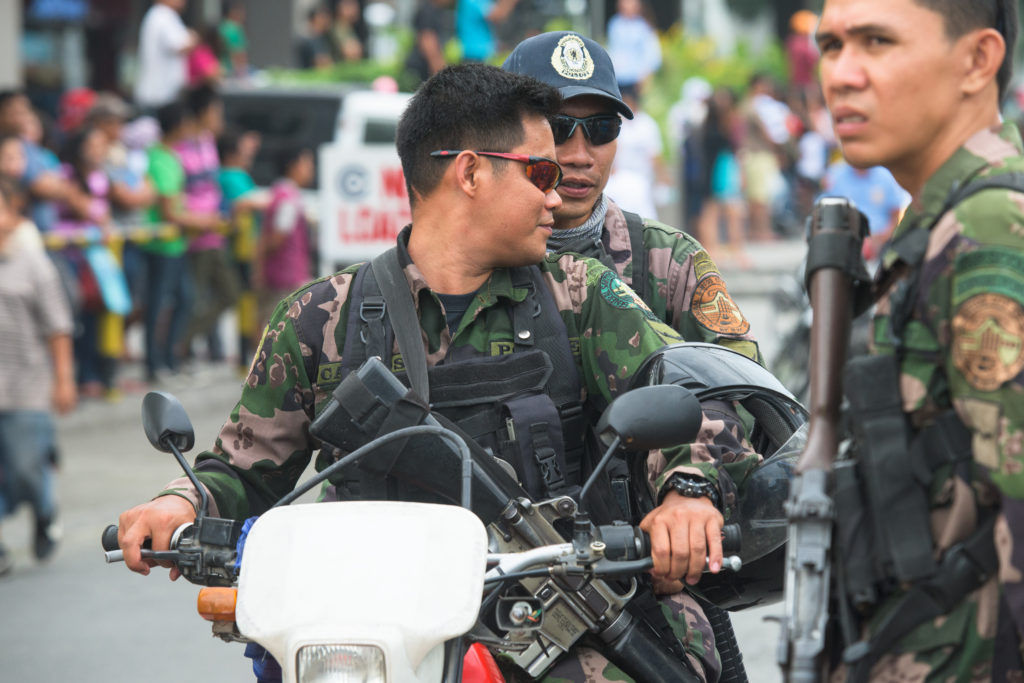Marc Simms is an occasional blogger for Proelium Law LLP. Marc holds a MLitt in Terrorism Studies and a Masters in International Relations, both from St Andrews. His particular interests are in emerging international security issues, unconventional warfare and terrorism.
Systemic Failings
The ongoing crisis in Marawi has shown significant shortcomings in the Philippine security forces, raising questions about strategy as well as what intelligence failures led to the Maute Group being able to infiltrate and temporarily seize control of the city.
The crisis erupted on May 23rd, as the Philippine Army, working in conjunction with the National Police, undertook raids in the city to capture Isnilon Hapilon, the experienced Abu Sayyaf commander who has been named as the “Emir” representing Islamic State in the Philippines. However, when the initial raid on an apartment failed to secure Hapilon, clashes broke out between the security forces and militants in the Basak Malutlut area of the city. Hapilon also called upon the Maute Group as reinforcements.
The Maute Group
The Maute Group, also known as the Islamic State of Lanao and Dawlah Islamiya, are a group composed of former Moro Islamic Liberation Front guerrillas, led by Omar and Abdullah Maute. Founded in 2012, the group has pledged its support to ISIS, though there are no indications ISIS have recognised them in return. Their activity has increased substantially in the last year, clashing with the Philippine Army around Butig in February, abducting sawmill workers in April, being linked to the Davao City bombing and also being the main suspects in a failed bomb plot against the US embassy in Manila.
The group has also developed quite significant links to both Abu Sayyaf and to the Indonesian terrorist group Jemaah Islamiyah, who appear to have established a presence on Mindanao in the past five years. They may have also attracted a small amount of foreign fighters, according to the nationalities of militants killed by the Philippine Army in Marawi.
On May 23rd, roughly 500 militants from the Maute Group attacked Camp Ranao, where the 103rd Brigade is based, seized the Marawi City Hall and organised a breakout of the city jails. They additionally took over part of the Mindanao State University, set up road blockades and started to abduct civilians.
In response, the Philippine Army brought in extra soldiers, allowing them to recapture the University and City Hall the next day, though they were not able to restore order in the city entirely. Consequently, on the 25th of May, the Philippine Air Force started to carry out air-strikes on surrounding villages where it was suspected Hapilon may be hiding, as well as striking Maute sniper positions within the city. By the 31st of May, the Philippine Army stated it had retaken 90% of the city, though the same day saw a friendly fire incident where an air strike killed 11 soldiers and wounded 7 others.
“It’s very sad to be hitting our own troops,” Defence Secretary Delfin Lorenzana told a news conference. “There must be a mistake somewhere, either someone directing from the ground, or the pilot.”
The majority of the militants are now believed to have left the city, or been killed or captured, but it is still believed that up to 100 militants may be hiding in the city, with almost 300 fleeing to the surrounding countryside.
Need advice?
If you’d like further information, or to discuss working with us, please get in touch







